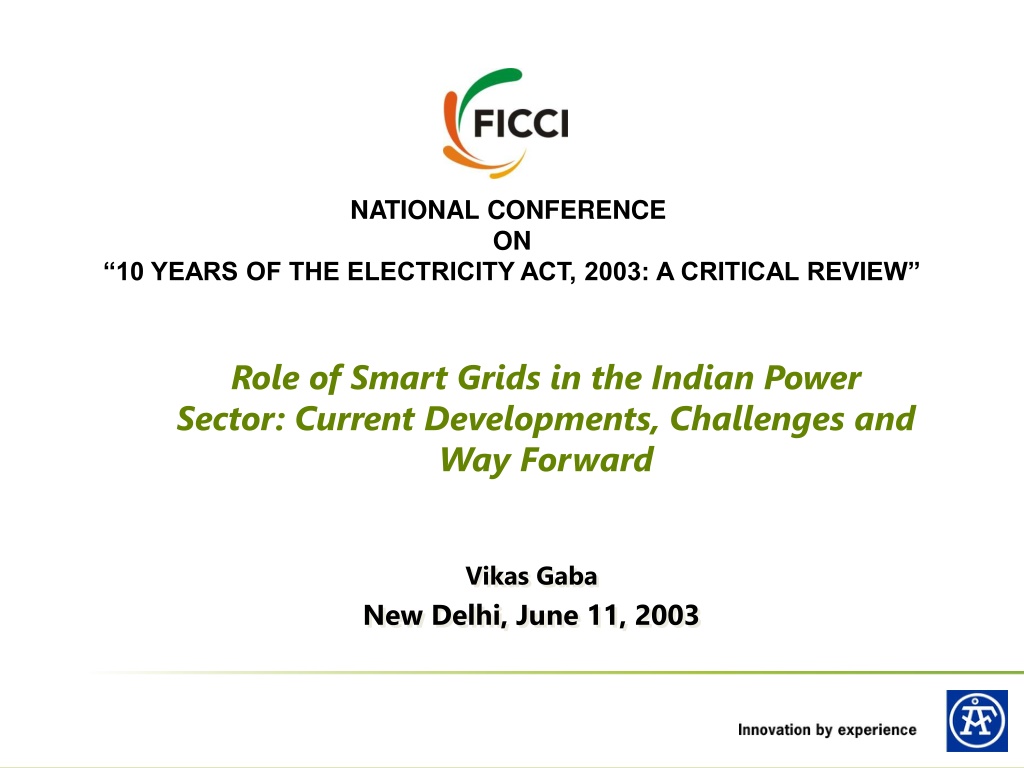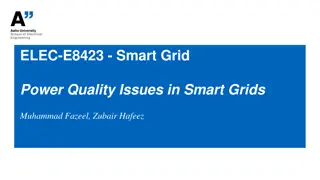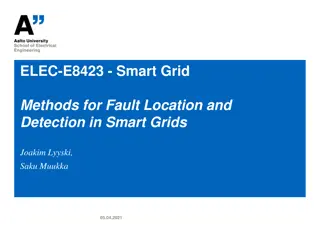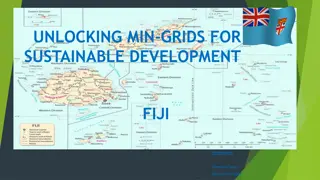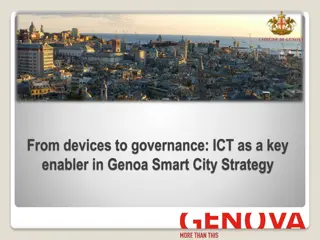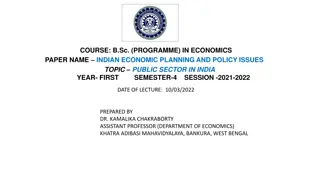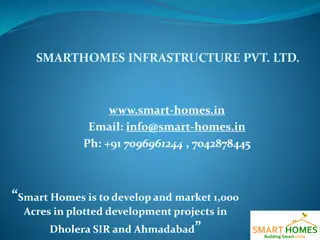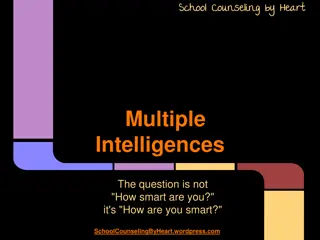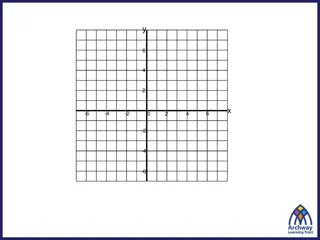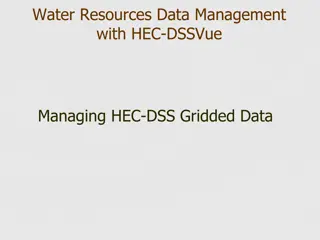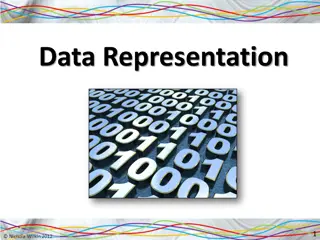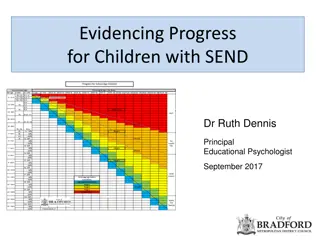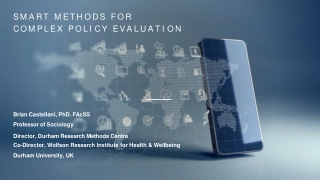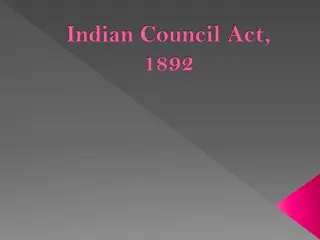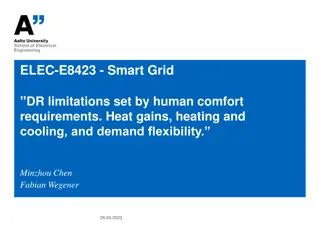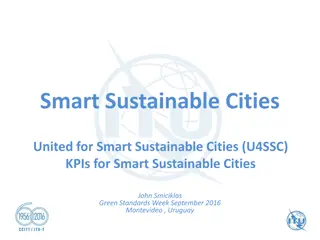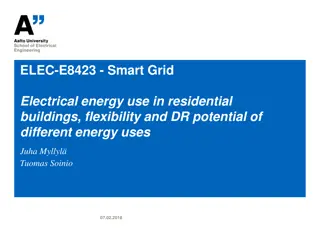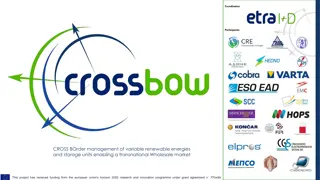Role of Smart Grids in Indian Power Sector: Challenges and Future
Exploring the significance of smart grids in addressing challenges faced by the Indian power sector, this review delves into current developments, emerging needs, and the way forward. Key topics covered include energy realities, global advancements, India-specific challenges, implications for power balancing, and the transformation potential of smart grids for efficiency and reliability enhancement.
Download Presentation

Please find below an Image/Link to download the presentation.
The content on the website is provided AS IS for your information and personal use only. It may not be sold, licensed, or shared on other websites without obtaining consent from the author. Download presentation by click this link. If you encounter any issues during the download, it is possible that the publisher has removed the file from their server.
E N D
Presentation Transcript
NATIONAL CONFERENCE ON 10 YEARS OF THE ELECTRICITY ACT, 2003: A CRITICAL REVIEW Role of Smart Grids in the Indian Power Sector: Current Developments, Challenges and Way Forward Vikas Gaba New Delhi, June 11, 2003
Structure India s energy realities and emerging needs Smart Grids Concept and Application Areas Global Developments Developments in India Challenges to Accelerated Deployment Way Forward
Indias Energy Realities and Emerging Need 3
Indias Energy Sector Realities and Emerging Needs National Priorities Current Situation Chronic power shortages Rapid demand growth Inadequate energy access Implications Augmentation of generation capacity; efficiency improvement Power evacuation and grid access Meeting Demand Shortage Require smarter systems for power balancing to deal with variability & unpredictability RE capacity increasing ~ 3000+ MW added each year Clean Energy Deployment Poor operational efficiency High system losses R-APDRP has provided much needed support Need for ability to control and monitor power flow till customer level Operational Efficiency Improvement Real time system to enable better system visibility and consumer participation Poor system visibility Lack of reliability Enhancing Consumer Service Standards Smart Grids can transform the existing grid into a more efficient, reliable, safe and enable address sector challenges.
Understanding Smart Grid System (G, T, D) with an advanced two-way communications system Enables real-time monitoring and control Provide greater visibility and transparency Consequently, improvement enables cost reduction and efficiency 6
Several Potential Application areas exist Electricity Distribution Electricity Markets Renewable Energy Energy Storage Transport Industrial Energy Efficiency Building Energy Efficiency Source: http://www.renesas.eu/ecology/eco_society/smart_grid/ 7
Globally, a number of initiatives have already started, most of it through strong support from the Government 8
Global Market Trends Country National Smart Grid Initiatives China The Chinese government has developed a large, long-term stimulus plan to invest in water systems, rural infrastructures and power grids, including a substantial investment in smart grids. China s State Grid Corporation outlined plans in 2010 for a pilot smart grid programme that maps out deployment to 2030. Smart grids investments will reach at least USD 96 billion by 2020. United States USD 4.5 billion was allocated to grid modernisation under the American Recovery Reinvestment Act of 2009, including: USD 3.48 billion for the quick integration of proven technologies into existing electric grid infrastructure USD 435 million for regional smart grid demonstrations USD 185 million for energy storage and demonstrations Japan The Federation of Electric Power Companies of Japan is developing a smart grid that incorporates solar power generation by 2020 with government investment of over USD 100 million. 9
Global Market Trends Country National Smart Grid Initiatives United Kingdom OFGEM has set up a Low Carbon Networks fund that will allow up to GPB 500m support to distribution network operator projects that test new technology, operating and commercial arrangements. France The electricity distribution operator EDF is deploying 300000 smart meters in a pilot project based on an advanced communication protocol named Linky. If the pilot is deemed a success, ERDF will replace all of its 35 million meters with Linky smart meters from 2012 to 2016. Brazil Several utilities are managing smart grid pilots, including Ampla, a power distributor in Rio de Janeiro State owned by the Spanish utility Endesa, which has been deploying smart meters and secure networks to reduce losses from illegal connections. AES Eletropaulo, a distributor in S o Paulo State, has developed a smart grid business plan using the existing fibre-optic backbone. The utility CEMIG has started a smart grid project based on system architecture developed by the IntelliGrid Consortium, an initiative of the California-based Electric Power Research Institute. 10
India guided by the developments at the global level, is slowly gearing up 11
Institutional Set-up for Smart Grids in the country Government of India / Ministry of Power Bureau of Indian Standards (BIS) India Smart Grid Task Force (ISGTF) State CERC/ SERC s CPRI, BEE, CERC Government Industry/ Research Institutes India Smart Grid Forum (ISGF) State Utilities Indicates direct interaction among the entities Indirect interaction among the entities
14 pilots supported by Govt. of India as Proof of Concept National Priorities Smart Grid Interventions proposed by the Utilities Demand Side Management Demand Response Power Demand Shortage Peak Load Management Crew Management Renewable Energy Integration Demand Response Clean Energy Meter Data Management System AMI Outage Management Consumer portal Theft Management & Tamper Detection Operational Efficiency Improvement Asset Monitoring Substation Automation Work Force Management Consumer Service Standards Power Quality Automatic Billing Lot of additional work is happening on issues such as Demand response, Micro-Grids, etc beyond the 14 pilots
Key Challenges Government Support funding and to ensure coordinated development National Road Map adopted but implementation wherewithal missing Access of financial resources particularly due to poor financial health of the power utilities Lack of Policy and Regulation related to Smart Grid applications No proven commercial viability of large scale smart grid implementation Cost and benefit assessment (Most of the initiatives are pilots) Development of Smart Grid Standards including pilot models that can be adopted by discoms based on their level of maturity to handle such applications Ability of users to absorb implementation of advanced technology Lack of awareness requiring knowledge creation, training and capacity building of both the utility and consumers Electricity Act 2003 and the underlying policies does provide for introducing all of the above, however implementation mechanism have to be ensured 15
Way Forward Goals in the National Road Map to be accompanied by implementation structure and mechanisms Need for coordinated development nationally as well with international bodies Development of SG Regulations: Optimal regulatory response is of immense importance to make the overall initiative successful and attractive to all parties Need for creating awareness and acceptance of Smart Grid technologies Process support to demonstrate commercially viable pilots to demonstrate success and dissemination of such initiatives to other utilities/users Need to undertake initiatives to encourage indigenous vendor development for reduction of costs and ensure long-term service support 16
Development Potential and Issues across application areas 18
Development potential & issues across various application areas Application Area (Current Status) Distribution Business Issues Potential/Importance of Smart Grids High (can technological upgradation) Lack of measurements and controls Antiquated technologies Poor business orientation bring rapid Inefficient Huge Theft Poor customer service & reliability Markets Supports loss reduction and demand response High controls effectively supported) (Open access be and very Poor networks. Problems in open access Inadequate Processes and Controls Poor cost signaling can >10% of overall electricity sale Affected efficiency gains Send price signals to consumption (distribution) Business Industrial Energy Efficiency Lack of awareness High (SG enables better load management through DSM and DR) Improving rapidly Signalled by environmental market 19
Development potential & issues across various application areas contd Application Area (Current Status) Business Issues Potential/Importance Smart Grids of Environmental (REC, PAT) Markets Nascent, confidence to investments Baseline definition (PAT) and monitoring Trading refinement does not provide High strong controls base and also enable response to price signals) (SG can provide a information and issues in Nascent, developing fast Closely linked efficiency & renewables to energy system needs Renewable Energy Variability storage Transmission controls management & Very High (SG can assist in grid integration, forecasting, balancing and storage) Fast developing Fills India s Energy void networks and Energy Storage High energy provision for balancing power & islanding during blackouts) (Has applications storage, in Expensive Technological upgradation Space requirements enabling Nascent in India Closely linked to RE & EE 20
Development potential & issues across various application areas contd Application Area (Current Status)` Business Issues Potential/Importance Smart Grids of Transport High EVs are expensive Largest electricity Pollution a significant issue Only Hybrid Vehicles (fossil fuel + EV) available Current focus only on mobility and associated environmental issues energy sub-sector after SG can integrate with grid and reduce short term power purchase; use as balancing resource; management) Inadequate infrastructure deployment proliferation for and peak load Regulatory Issues Building Energy Efficiency High. Lack among consumers of awareness builders and Fastest growing energy consuming sector Smart Grid can enable real time consumption monitoring and control;, reduction consumption enabling wasteful High initial cost of EE appliance Widely varying energy efficiency levels of 21
